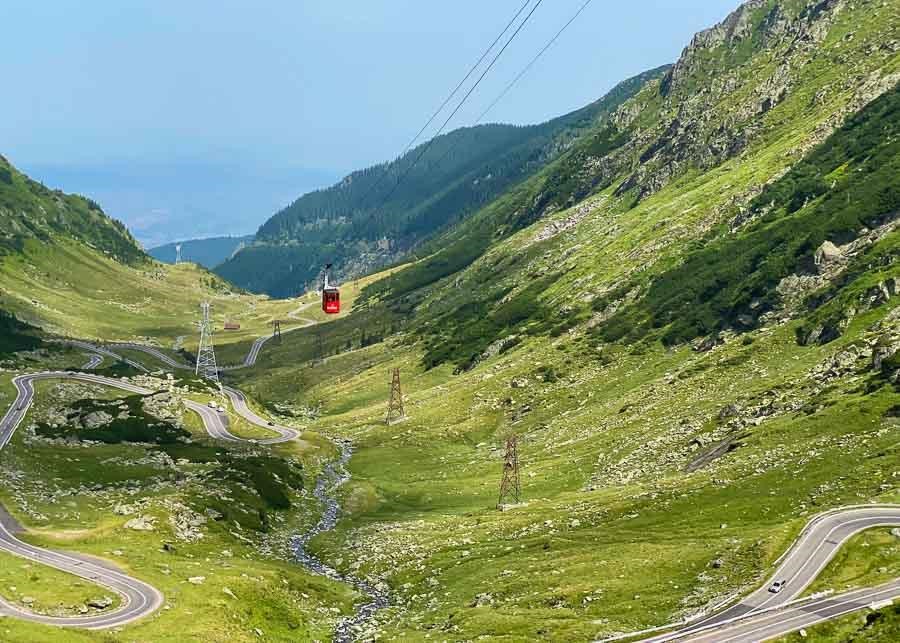
One of the most exciting things to do in Romania is drive the scenic Transfagarasan highway, which traverses the Fāgāras Massif. The road’s official name is Drumul National 7C (DN7C), but everybody knows it as the Transfagarasan (not to be confused with its sister road and competitor – Transalpina). The Transfagarasan highway was constructed in the early 1970s, during the rule of Nicolae Ceausescu, for military purposes. The road connects two of Romania’s historic provinces: Transylvania and Walachia. Ceausescu’s idea was to create a strategic route that would ensure a quick military access across the mountains, in case of a Soviet invasion. Unfortunately, the Transfagarasan proved to be more “Ceausescu’s folly” than a necessity. First of all, the highway goes across very high mountains and therefore it’s only passable five months a year. Secondly, there were already other routes that connected the two regions, which were also more suited for military purposes. But the megalomaniac Ceausescu built it anyway, sacrificing human lives and spending a tremendous amount of money. The official figures estimated that only 38 workers died throughout the road’s construction. But witnesses of the time stated that hundreds of boys perished – soldiers that were untrained in the use of explosives. The construction began in 1969 with two teams, each starting from one side of the mountain. They met in August, 1971, in a place that is commemorated by a monument. The Transfagarasan highway was finished and inaugurated in September, 1974. One other interesting fact is that on this road you’ll find the longest mountain tunnel in Romania. measuring 887 meters in length and and 4.4 meters in hight. The Capra-Bâlea tunnel was dug into the rock with 20 tons of dynamite. The Transfagarasan road crosses 830 bridges, 27 viaducts and 5 tunnels. For its construction several million tons of rock had to be deployed and 6520 tons of dynamite were used. One of the most difficult sections of Transfagarasan is between Bâlea Waterfall and Bâlea Lake, where the highway reaches its highest elevation (2042 meters). At the very top, the road lunges straight through the mountain face to come out on the other side. Bâlea Lake is a great place to stop for a break or to do some sightseeing. As you start driving down the highway twists and turns like a million times before you reach the bottom. The drop is swift as the road angles downward severely. There are several hairpin turns and dramatic bluffs that will take your breath away, so be prepared! But the panorama is out-of-this-world beautiful! A picturesque mix of rock and green vegetation, narrow gorges, lakes and rivers. Transfagarasan Highway closes during the winter and opens in summer for 5 or 6 months a year, depending on the weather conditions. Sometimes it may open as early as the end of May and will stay open till the beginning of November. Other times, if the winter is long, it may not open till late June. Or if a bad snow storm hits it may close even in summer. Therefore you should always check the latest news and the weather report before planning a road trip here.
The best time of year to drive the Transfagarasan is in July and August when the weather is pleasing. Except for the highest point at Bâlea Lake where the weather can be very unpredictable, the rest of the route has more stable weather.
